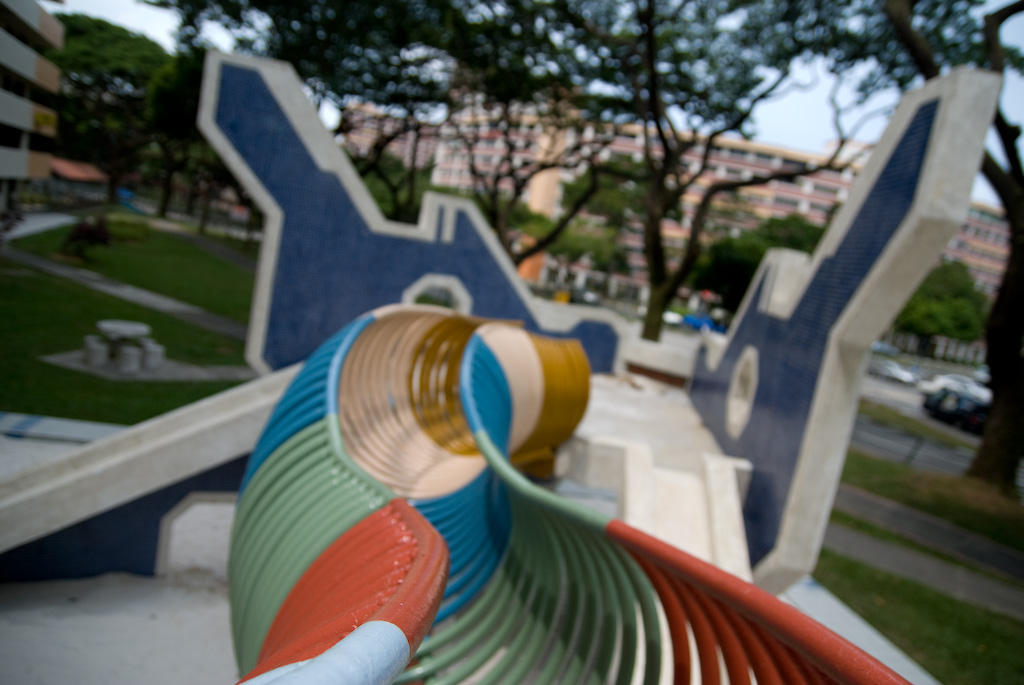The playgrounds a generation of Singaporeans played and grew up in were slain in the name of safety.
“Adults of tomorrow will recall dragons of Bedok” [1]— declared a 1987 headline in The Straits Times newspaper. Three and a half decades later, this prediction seems prophetic given how fondly a generation of Singaporeans now remember the dragon-shaped playgrounds they grew up playing in. Like its inspiration, the dragon, this playground design has become the symbol of a myth, of a now almost non-existent space and way of play for a generation of Singaporeans.
The dragon playground was first unveiled to the public in 1979, one of five ‘adventurelands’[2] that became a part of Singapore’s public housing esates. Other designs included a pair of doves, a metal cage, another with man-made slopes and one made for climbing. These new playgrounds, each costing around S$20,000 to construct, were the Housing & Development Board’s (HDB) plan to “move away from the preponderance of static animal sculptures” found in its existing playgrounds to “miniature adventurelands for the young and active” instead[3].
